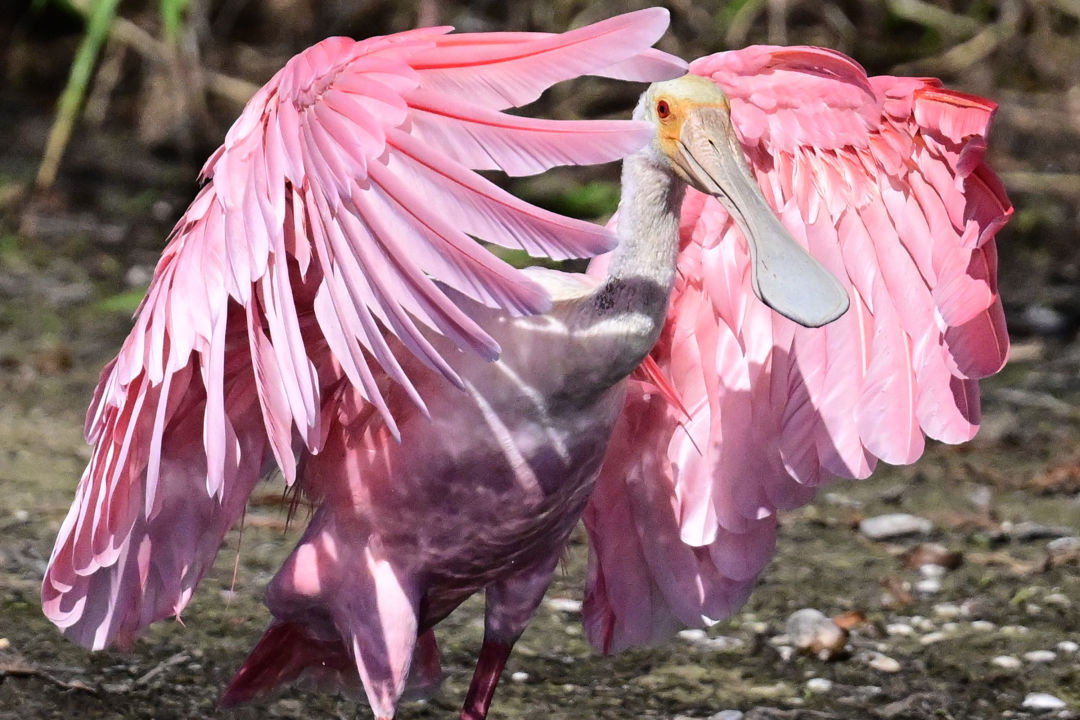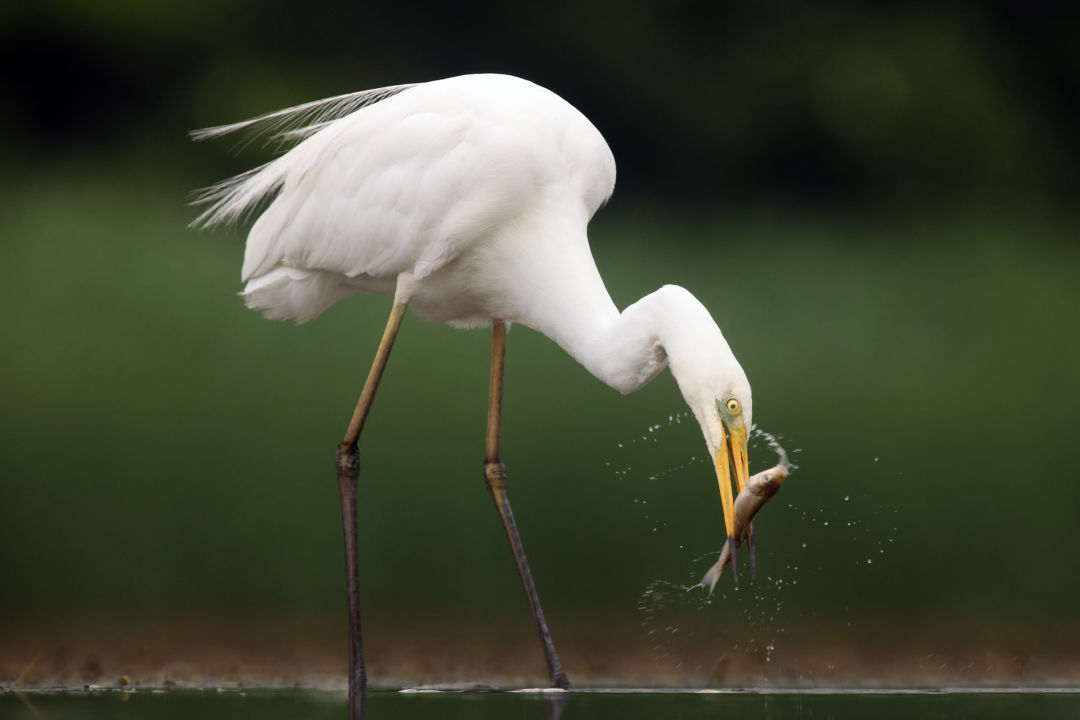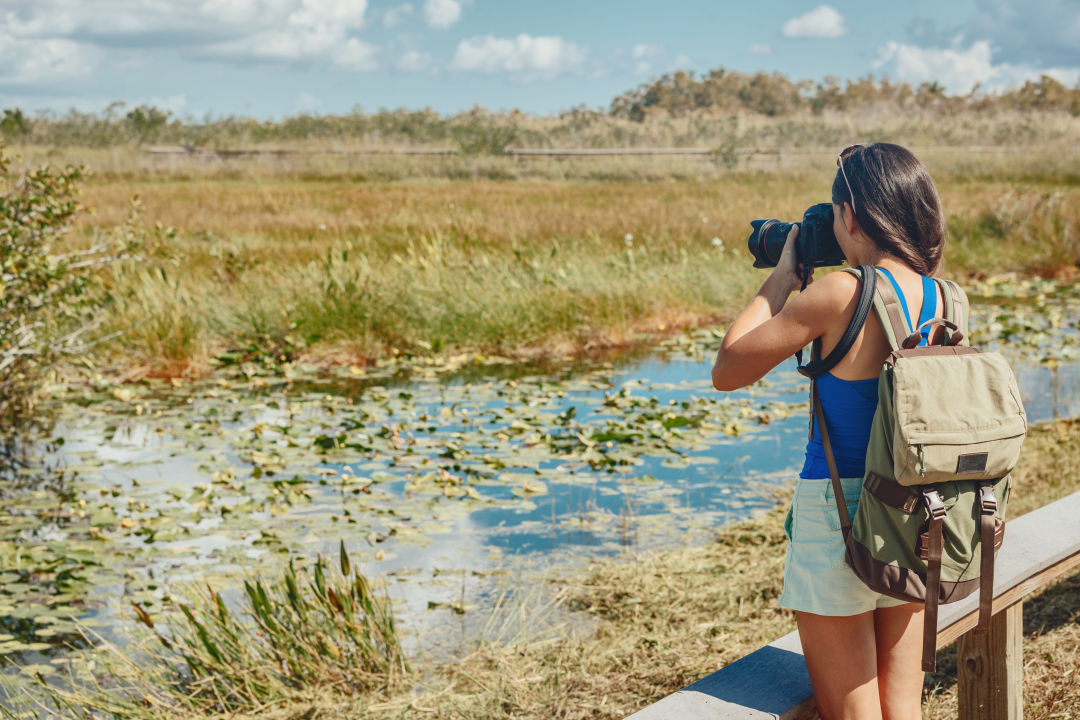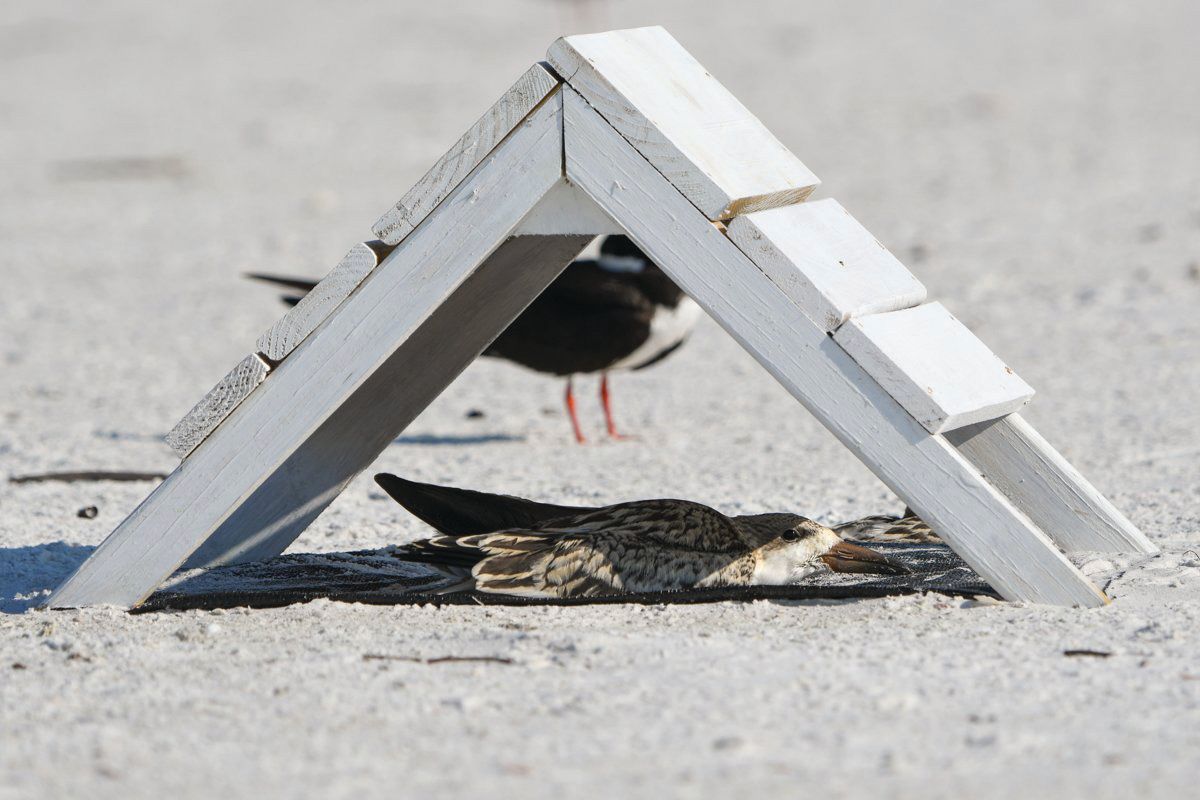A Beginner's Guide to Birdwatching in Sarasota

A great blue heron in flight.
Image: Jim MCarty
The Sarasota-Manatee area is home to some of the most spectacular birds in the United States. “Our counties are in a flyway for migrating birds from Canada down to South America, and we have great varietal habitat, from beaches to dry prairie to mesic hammocks,” says Helen Jelks King, the Sarasota Audubon Society's day trip coordinator and a member of its board. While many of us can identify a sandhill crane or pelican, there are hundreds of other species that share our tropical backyard. Here’s how to ID 10 of our most breathtaking local birds—plus, insider tips on where to find them.
Osprey

Osprey
These large birds of prey are often confused with eagles. However, osprey are smaller, with white feathers under their wings and a dark brown stripe across their eyes. You’ll notice their large nests on open dead tree tops, light poles and other platforms.
Fun Fact
Osprey are primarily pescatarians. They strike the water feet first to capture fish with their talons.
Where to See an Osprey
Myakka River State Park, Joan M. Durante Park, Perico Preserve
Bald Eagle

Bald eagle
Image: Jim MCarty
This majestic raptor has been our country's national bird since 1782. Its large white head features piercing eyes and a yellow hooked bill. The same shade of yellow is echoed on its feet. Eagles soar and keep their wings flat while hunting, as opposed to flapping them. They’re carnivores who eat waterfowl, snakes, turtles, and other small animals.
Fun Fact
Eagles mate for life and create huge nests atop tall trees, light poles, and communication towers.
Where to See a Bald Eagle
Oscar Scherer State Park, the Celery Fields, Myakka River State Park, Lemon Bay Park, the landfill (yes, really)
Roseate Spoonbill

Roseate spoonbill
Image: Jim McCarty
These unique wading birds stand more than 30 inches tall and have beautiful pink feathers along their wings, ruby-colored eyes, and large, spoon-shaped bills. Spoonbills are social and often found in groups called “bowls.” To eat, they drag their bills in the water and literally spoon up any food that touches their mouths.
Fun Fact
Roseate spoonbills are the only pink bird you’re likely to spot in the wild in Sarasota. Flamingos are rare in these parts, and much taller at around 4 feet. If you want to see a flamboyance of flamingos in their natural habitat, you’ll have to visit the Everglades or Florida Keys, although you might get lucky after the next hurricane—Idalia pushed some leggy pink beauties to the shores of Tampa Bay. For a sure thing nearby, visit Sarasota Jungle Gardens where you can feed the resident flock.
Where to See a Roseate Spoonbill
Siesta Key Beach, Myakka River State Park, Robinson Preserve, Emerson Point Preserve
Red-Shouldered Hawk

Red-shouldered hawk
Image: Jim MCarty
The red-shouldered hawk is a common hawk found in woodlands, mangrove forests and even residential neighborhoods. It has a reddish-colored head, breast and belly. Its wings and back are dark brown with white spots; look for a long striped tail with wide black bands alternating with thin white bands. Red-shouldered hawks can be confused with red-tailed hawks, which are larger and have white bellies.
Fun Fact
Red-shouldered hawks perch at fairly low levels, so you may spot them on utility wires, low tree branches and fences.
Where to See a Red-Shouldered Hawk
Oscar Scherer State Park, Myakka River State Park, the Celery Fields, Crowley Museum and Nature Center, Lemon Bay Park
Anhinga

Anhinga
These large, shiny black birds can be confused with cormorants. Both will spread their wings out to dry in the sunshine after they've been swimming. To identify the anhinga, look for white feathers on the wings and a pointed yellow bill (cormorants have all-black wings and a hooked, mostly gray bill). Another clue: Anhingas prefer fresh water while cormorants favor salt water.
Fun Fact
Anhingas are also known as snake birds, because only their long necks and heads can be seen above the water when they're swimming.
Where to See an Anhinga
The Celery Fields, Venice Area Audubon Rookery, Lake View Park
Great Egret

Great egret
This large (more than 3 feet tall) white wading bird has a long neck that rests in an S-shaped curve, a yellow pointed bill and yellow feet. Long white feathers grow near the tail during the breeding season. The great egret is often confused with the snowy egret, but the snowy egret is much smaller and has a black pointed bill, yellow feet, and crested feathers near its head and neck.
Fun Fact
Great egret feathers were a beloved accessory in women’s hats during the 19th and early 20th centuries. The birds were hunted to near extinction but are now a protected species.
Where to See a Great Egret
Quick Point Nature Preserve, Venice Area Audubon Rookery, Nathan Benderson Park
Great Blue Heron
These large, graceful birds—that's one pictured at the top of this article—are usually spotted alone near the water’s edge. They sport long gray-blue feathers at the back of the head and around the base of the neck. You’ll also notice a wide yellow bill, black eyebrows and a dark belly.
Fun Fact
The great blue heron flies with its neck curved into an S-shape and its long legs trailing straight out behind it.
Where to See a Great Blue Heron
Siesta Key, Quick Point Nature Preserve, Venice Area Audubon Rookery, Greer Island
White Ibis

White ibis
Image: Spacaj/Shutterstock.com
The white ibis is easy to recognize thanks to its gleaming white feathers and long, curved orange-red bill, reminiscent of a Venetian bird mask. White ibis like to wade in shallow bodies of water and can be found in neighborhood retention ponds and other freshwater marshes. They can be identified in flight by their black wing tips and straight necks.
Fun Fact
White ibis are social birds who like hanging with a big crew (sometimes more than 100 birds), especially during breeding season.
Where to See a White Ibis
Quick Point Nature Preserve, Greer Island, Pinecraft Park
Crested Caracara

Crested caracara
Image: Jim MCarty
An imposing-looking raptor that is also sometimes confused with the bald eagle and osprey, the crested caracara’s most distinct feature is a bold black crest of feathers on top of its head—it resembles a bird toupee. It also has an orange face. Caracaras like to hunt at low elevations over scrubland and fields. They’ll even stalk prey on foot and eat roadkill.
Fun Fact
Also known as the Mexican eagle, the crested caracara is actually a falcon and the national bird of Mexico.
Where to See a Crested Caracara
Crowley Museum and Nature Center, the Celery Fields, Myakka River State Park
Parakeets

Nanday parakeets
You’ll probably hear this brightly-colored bird before you see it. Parakeets congregate in large, loud, squawking colonies. Our region is home to two types of parakeets, both bright green. The nanday parakeet has a noticeable black head, blue tail feathers and red thighs. The monk parakeet is mostly green with yellow and white accents.
Fun Fact
Parakeets are non-native and feral. The flocks you see today are the descendants of domesticated birds that were released or escaped.
Where to See a Parakeet
The Celery Fields, Turtle Beach, Anna Maria Island
Four Places to Get Your Birdwatching Fix

The Celery Fields are a great place to see local birds.
Image: Hannah Phillips
Winter is the ideal time to see unique birds. Migrating species stop in Sarasota for some R&R before and after the long flight across the Gulf. Here's where to catch a glimpse of Florida’s original snowbirds.
The Celery Fields
Nearly 250 bird species have been counted in this 400-acre park. It’s also home to the Sarasota Audubon Society Nature Center, where you can learn about the joys of birdwatching, take guided walks and talk to bird experts from 8:30-10:30 a.m. daily from October to May.
Myakka River State Park
The oldest and largest state park in Florida features multiple habitats and more than 250 species of birds, from shorebirds to warblers to raptors.
Siesta Key
These pristine white sand beaches and waters filled with fish attract a full complement of seabirds, waders and shorebirds. Go early or late in the day to get the best view.
Lakeview Park
This former botanic garden off Proctor Road “is a sleeper that many birders are not aware of,” says the Sarasota Audubon Society's Helen Jelks King. Its large lake, woods and wetlands are home to a wide variety of birds. Recent sightings include ibis, anhinga, woodpeckers, herons, and ducks.
Want more? The Great Florida Birding Trail features 17 locations in Sarasota County and hundreds throughout Florida . The Sarasota Audubon Society also offers information on birding hotspots, guided walks, events, and checklists of area birds.
Birding Tips for Beginners

Birdwatching is a great way to enjoy the area’s picturesque parks and sun-drenched shores.
Image: Maridav/Shutterstock.com
Birdwatching is a great way to enjoy the area’s picturesque parks and sun-drenched shores, but that’s not the only benefit. “Birding is good for the brain,” says King. “Learning to identify and find characteristics of birds improves brain function. It’s also a subtle form of exercise!”
Get started with these guidelines.
Go in the Morning
The early bird does catch the worm. Birds are hungry and active in the morning. The end of the day can also yield great sightings.
Stay Quiet
Pick a spot, sit silently, and wait. Birds have keen hearing and eyesight and startle easily. Pack water, snacks, sunscreen and a hat so you can settle in.
Bring Binoculars
You can spot many birds with the naked eye, but binoculars—even a basic pair—will unlock gorgeous details and unique features.



